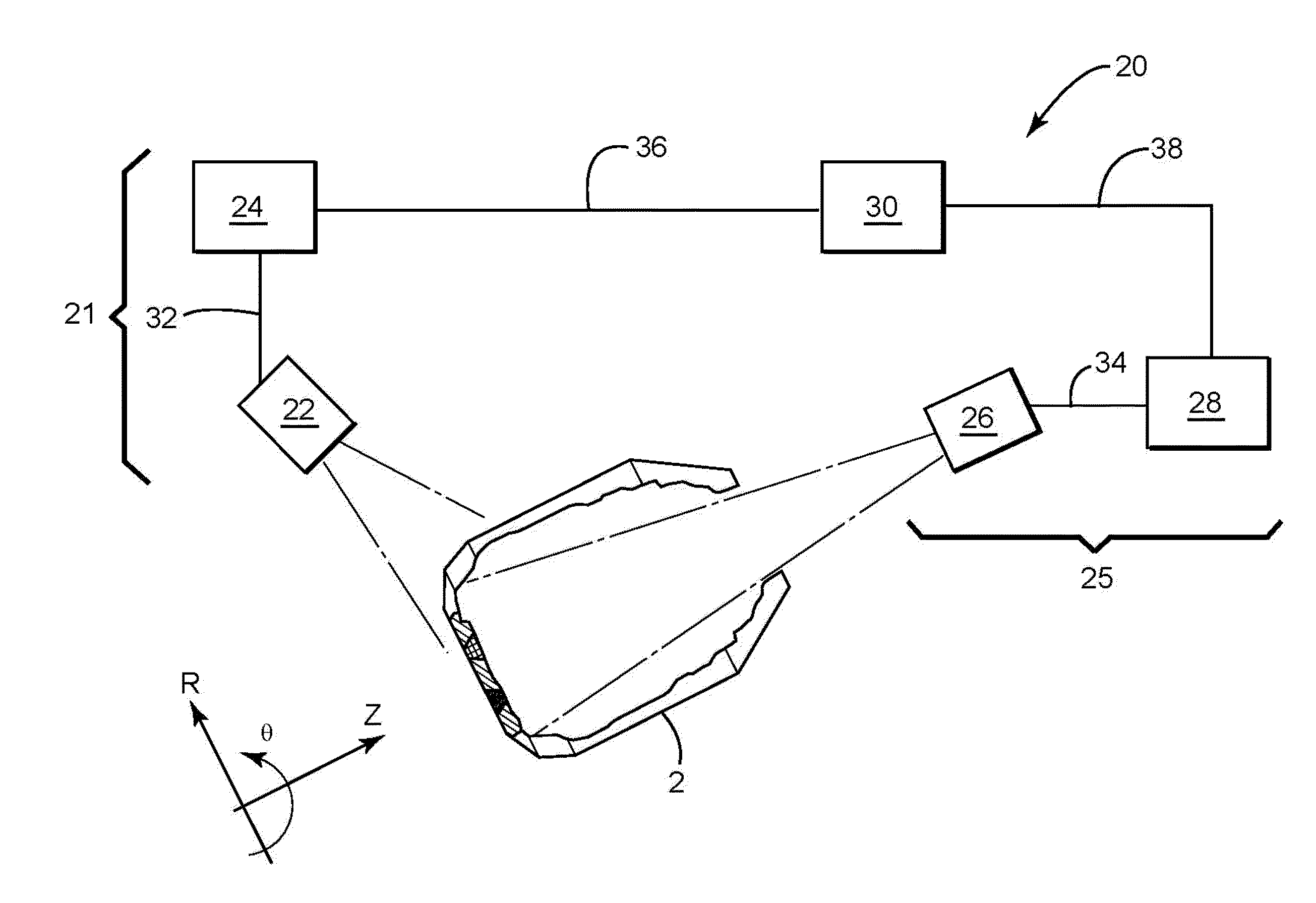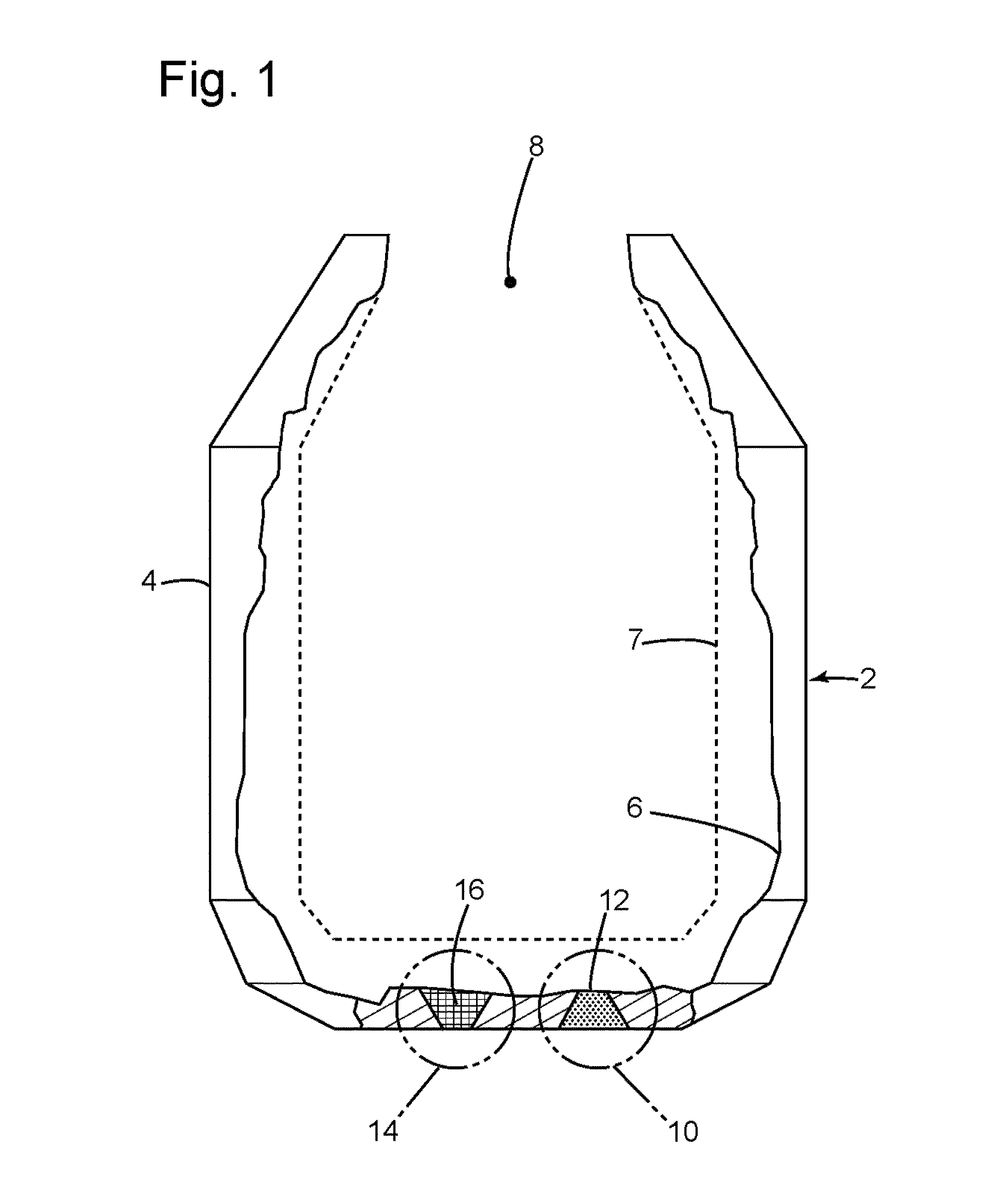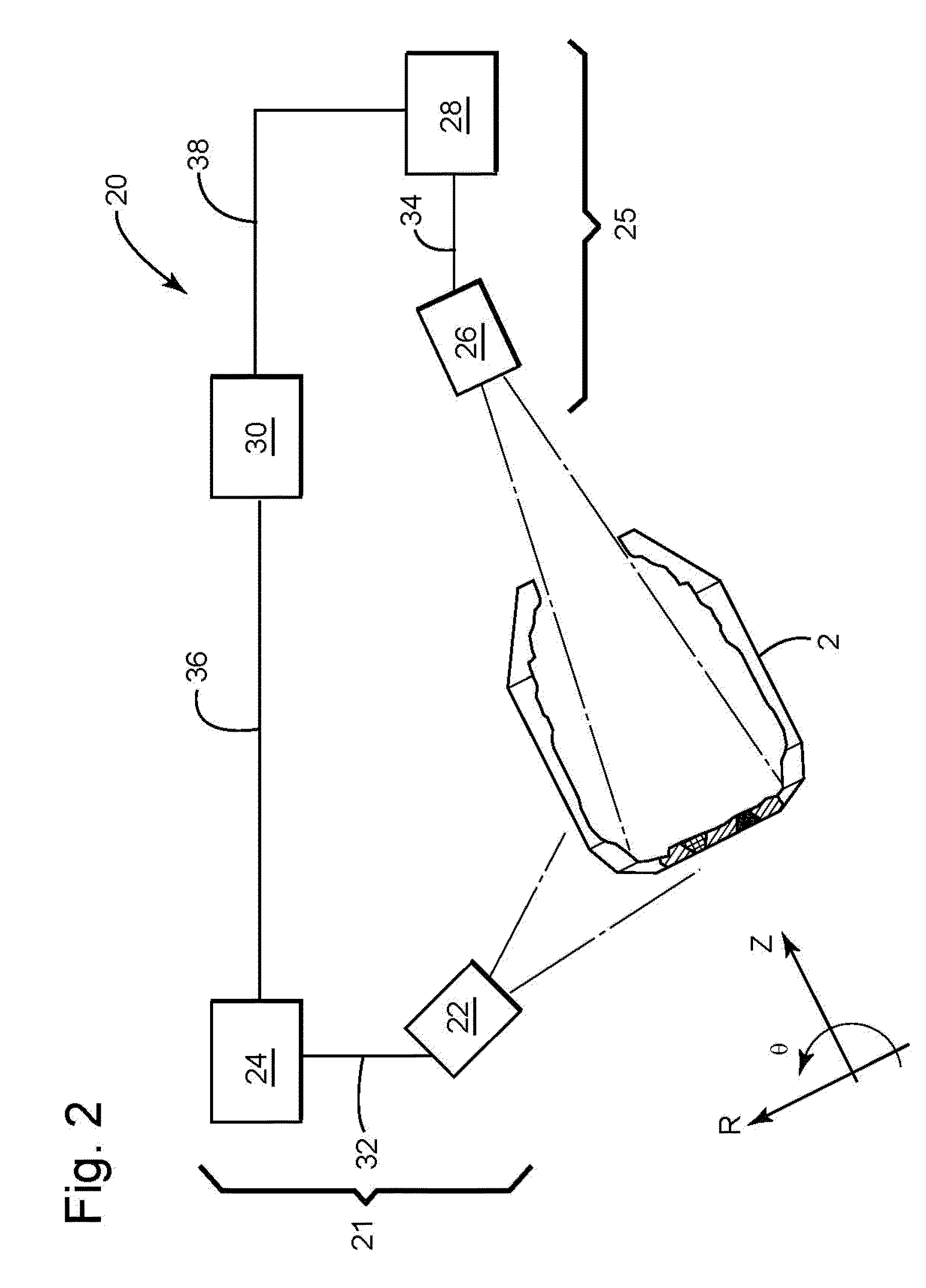Apparatus, process, and system for monitoring the integrity of containers
a technology for integrity monitoring and containers, applied in lighting and heating apparatus, furniture, instruments, etc., can solve the problems of exposing the container operator to unnecessary industrial hazards, requiring frequent inspection, and losing the proportion of the refractory surface in contact with the molten metal during processing
- Summary
- Abstract
- Description
- Claims
- Application Information
AI Technical Summary
Benefits of technology
Problems solved by technology
Method used
Image
Examples
Embodiment Construction
[0023]The following description of the exemplary embodiments refers to the accompanying drawings. The same reference numbers in different drawings identify the same or similar elements. The following detailed description does not limit the invention. Instead, the scope of the invention is defined by the appended claims. The following embodiments are discussed, for simplicity, with regard to the terminology and structure of apparatuses, systems, or methods capable of detecting potential failure locations in a container having a lining material to protect the same against elevated temperatures in a steel making application. However, the embodiments to be discussed next are not limited to these sets, but may be applied to other containers having a liner material exposed to an elevated temperature as compared to the melting point of the material of which the container is made, whose liner integrity needs to be determined in order to avoid unexpected failures.
[0024]Reference throughout t...
PUM
| Property | Measurement | Unit |
|---|---|---|
| sizes | aaaaa | aaaaa |
| thicknesses | aaaaa | aaaaa |
| thicknesses | aaaaa | aaaaa |
Abstract
Description
Claims
Application Information
 Login to View More
Login to View More - R&D
- Intellectual Property
- Life Sciences
- Materials
- Tech Scout
- Unparalleled Data Quality
- Higher Quality Content
- 60% Fewer Hallucinations
Browse by: Latest US Patents, China's latest patents, Technical Efficacy Thesaurus, Application Domain, Technology Topic, Popular Technical Reports.
© 2025 PatSnap. All rights reserved.Legal|Privacy policy|Modern Slavery Act Transparency Statement|Sitemap|About US| Contact US: help@patsnap.com



